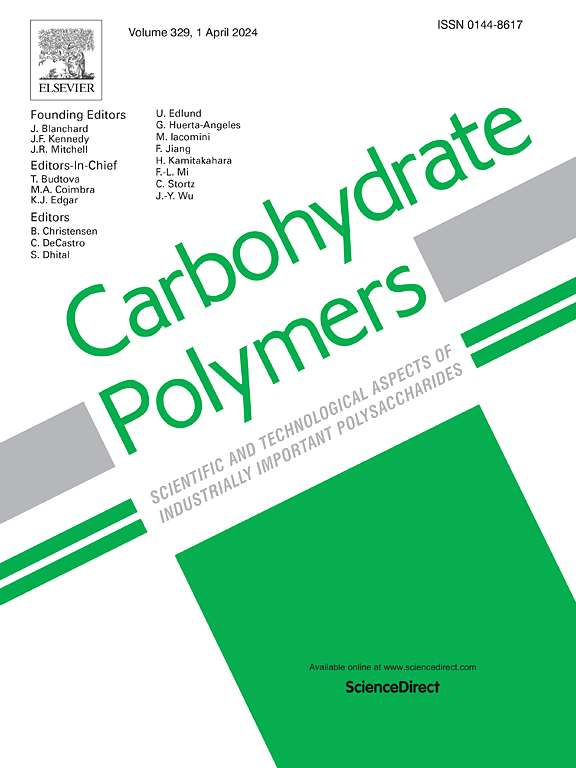A novel injectable sodium alginate/chitosan/sulfated bacterial cellulose hydrogel as biohybrid artificial pancreas for real-time glycaemic regulation
IF 10.7
1区 化学
Q1 CHEMISTRY, APPLIED
引用次数: 0
Abstract
Type 1 diabetes mellitus (T1DM) are characterized by blood glucose elevation with pancreatic β cells deficiency. As a safe alternative to frequent subcutaneous insulin injection, pancreatic β cell transplantation provides a promising therapeutic option for blood glucose control in T1DM. However, pancreatic β cell transplantation faces intractable challenges of the poor viability and severe host immune rejection. Therefore, a novel approach capable of improving the poor oxygen/nutrients supply and severe host immune rejection is highly desired. Herein, a novel biohybrid artificial pancreas, presenting glucose-dependent insulin release behavior, is constructed via pancreatic β cells encapsulating in a hydrogel scaffold. The hydrogel scaffold is made of the commixture of sodium alginate (SA), chitosan (CS) and sulfated bacterial cellulose (SBC). The biocompatible three-dimensional (3D) hydrogels protected pancreatic β cells from immune response but also allowed the exchange of nutrients and insulin. As a result of the synergistic effect, the biohybrid artificial pancreas can reverse the hyperglycemia and achieve sustained glycemic control for at least 30 days in diabetic mice. Collectively, we consider that this biohybrid artificial pancreas with an elaborate structure could provide an effective option for the treatment of type 1 diabetes.

求助全文
约1分钟内获得全文
求助全文
来源期刊

Carbohydrate Polymers
化学-高分子科学
CiteScore
22.40
自引率
8.00%
发文量
1286
审稿时长
47 days
期刊介绍:
Carbohydrate Polymers stands as a prominent journal in the glycoscience field, dedicated to exploring and harnessing the potential of polysaccharides with applications spanning bioenergy, bioplastics, biomaterials, biorefining, chemistry, drug delivery, food, health, nanotechnology, packaging, paper, pharmaceuticals, medicine, oil recovery, textiles, tissue engineering, wood, and various aspects of glycoscience.
The journal emphasizes the central role of well-characterized carbohydrate polymers, highlighting their significance as the primary focus rather than a peripheral topic. Each paper must prominently feature at least one named carbohydrate polymer, evident in both citation and title, with a commitment to innovative research that advances scientific knowledge.
文献相关原料
公司名称
产品信息
索莱宝
Hoechst 33342
索莱宝
Streptozocin
阿拉丁
calcium chloride anhydrous
 求助内容:
求助内容: 应助结果提醒方式:
应助结果提醒方式:


